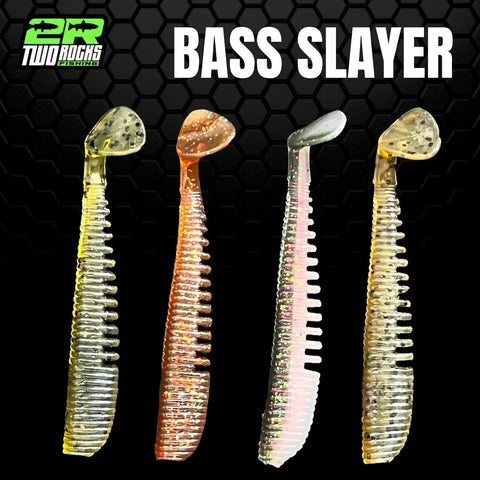Soft Bait 101: Picking the Perfect Size for Success

Soft baits have revolutionized the fishing world, offering a lifelike presentation that hard baits often can't match. But with the vast array of sizes available, how does one determine the ideal size for a fishing expedition? In this article, we'll dive into the factors that influence soft bait size selection and provide guidelines to help you make an informed choice.
If you haven't read our article about color selection, you might want to read that first before reading about size, it may ultimately help you with your product section.
If you don't already know, we have a couple different sizes of soft baits, 3.14", 4", 4.5" and are working to get more sizes in stock. Use code nice catch to get 25% off your order.
Now lets talk about size selection of soft baits.
1. Target Species
The most fundamental factor in choosing soft bait size is the species of fish you're targeting.
-
For Panfish: Smaller soft baits, ranging from 1 to 3 inches, are ideal. Panfish have smaller mouths, and these sizes mimic the tiny prey they usually feed on.
-
For Bass: A size range of 3 to 6 inches is generally effective. However, for trophy bass or in waters known for larger fish, don't hesitate to go up to 8 inches or more.
-
For Pike and Muskie: These predators prefer larger prey. Opt for soft baits that are 6 inches or longer.
- For Trout: The size range is 2 to 4 inches, our favorite being the 3.14" that we offer, it's right in between those sizes and can catch small and large fish.
- For Crappie: 2 to 4 inches is generally effective for these fish.
2. Natural Prey Size
Observing the natural prey in your fishing location can provide valuable insights. If the primary forage fish are small, even larger predators might be keyed in on smaller baits. Conversely, in waters where larger baitfish are prevalent, upsizing your soft bait can yield better results.
3. Fishing Conditions
-
Clear Water: In clear water, fish can get a good look at your bait. It's often best to use a more natural-sized bait that matches the local forage.
-
Murky Water: In stained or muddy waters, a larger soft bait can create more disturbance and be more easily detected by fish.
4. Seasonal Considerations
-
Spring: Post-spawn, fish are often hungry but might prefer smaller, easier-to-catch prey. Mid-sized soft baits can be effective.
-
Summer: As fish become more aggressive, they're more likely to chase larger prey. This is a good time to experiment with larger soft baits.
-
Fall: Fish are bulking up for winter and often target larger meals. Upsizing your soft bait can be beneficial.
-
Winter: Fish metabolism slows down, and they might prefer smaller, easy-to-catch prey. Smaller to mid-sized soft baits can be effective.
5. Presentation and Technique
The way you intend to present the bait can influence size selection.
-
Drop Shotting: This finesse technique often calls for smaller soft baits, usually in the 3 to 4-inch range.
-
Texas or Carolina Rig: These techniques can accommodate a wide range of sizes, but 4 to 6-inch baits are commonly used.
-
Swimbaits: When using soft swimbaits, sizes can range from 4 inches for bass to over 8 inches for muskie or pike and 3 inches for trout.
6. Trust Your Gut and Experiment
While these guidelines offer a starting point, fishing is as much about intuition as it is about rules. If you have a hunch that a different size might work, give it a try. Observing fish behavior and being adaptable can often lead to surprising successes.
Conclusion
Choosing the right size of soft bait is a blend of understanding your target species, considering the fishing environment, and being open to experimentation. By equipping yourself with a range of sizes and being observant on the water, you can dial in the perfect soft bait size for any situation. Remember, it's not just about the size but also the action, color, and presentation. Combine all these elements, and you're on your way to a rewarding fishing experience.




